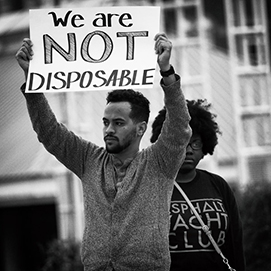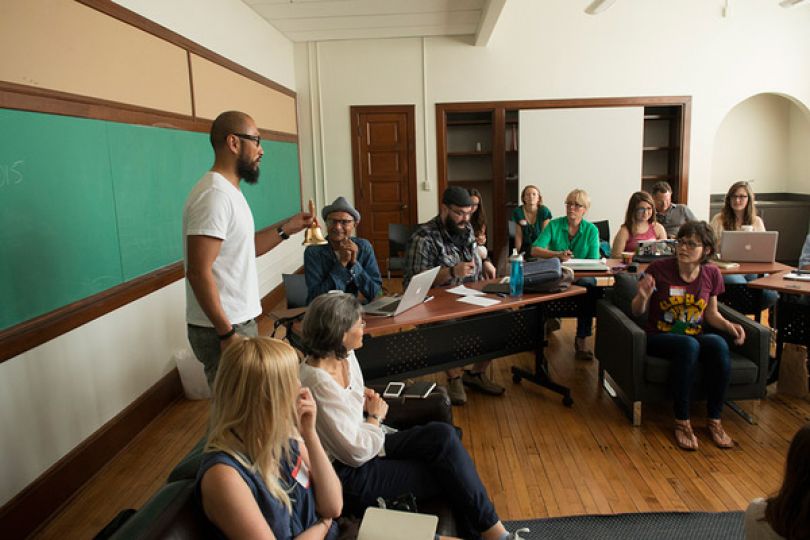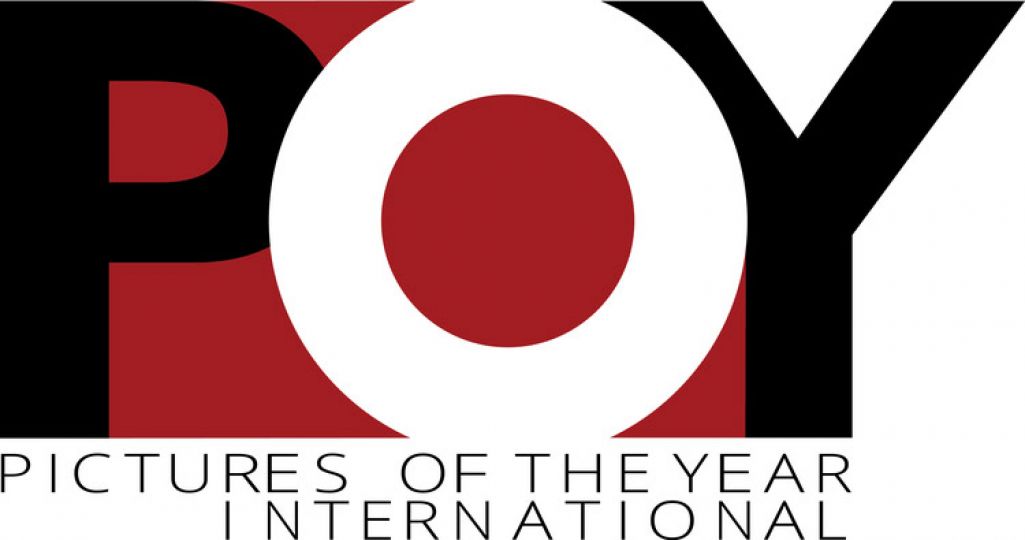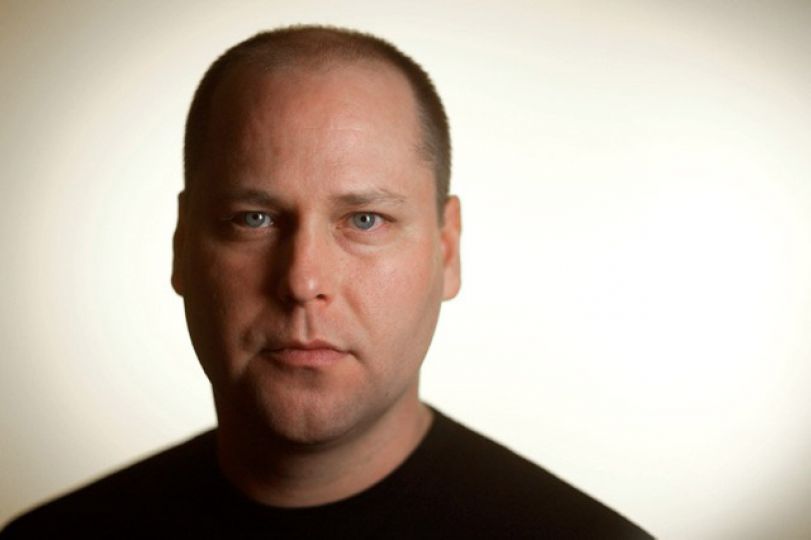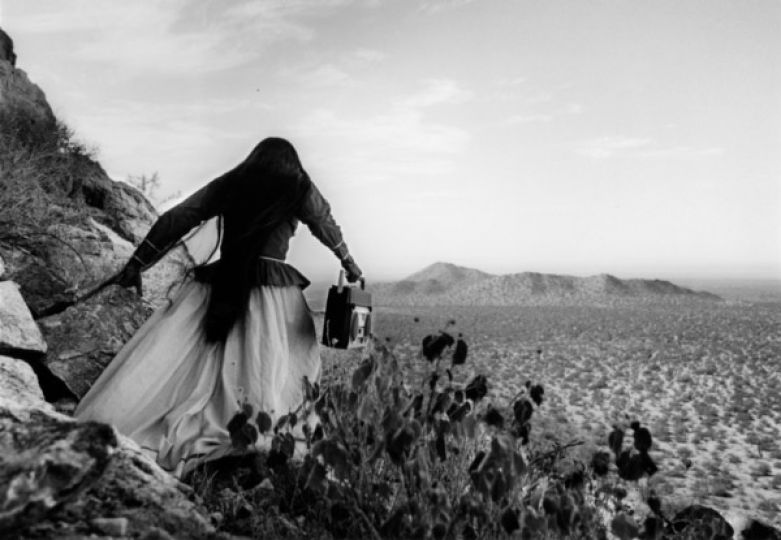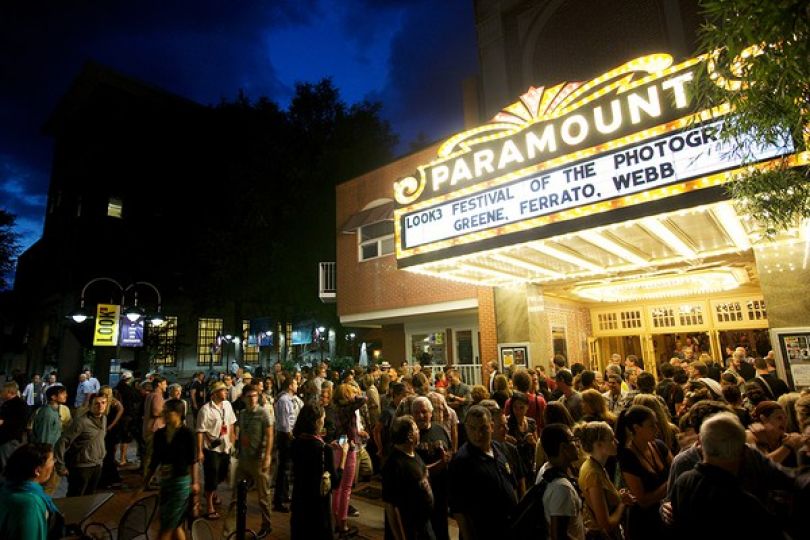Sheila Pree Bright is an award-winning fine-art photographer nationally known for her photographic series, Young Americans, Plastic Bodies and Suburbia. Bright’s most current work, #1960Now, exhibited at Look3, 2016, evolved from Bright’s public art series 1960Who. She is a featured artist at LOOK3 2016 and is presenting Artist’s Talk: Sheila Pree Bright |1960Now |Saturday, June 18, 2016 at 11:00am. Pree Bright’s #1960Now project will be on exhibit at The Jefferson School African American Heritage Center. The opportunity to interview Sheila Pree Bright has be a renewal in my consciousness as well as a reminder of the focus of my PhD work at the University of Georgia…the intersection of gender, race, and class and the continuous need to focus on bringing truth to power. Her images speak volumes as to how we must strive to continue the move toward equability regardless of gender, skin color, and socio-economic status.
EA Raines-Whorton: Most of our images from the 1960s civil rights movement are seared into our minds and we recognize the unknown individuals captured in those photographs. I find it intriguing that you chose unknown Freedom Riders for 1960Who. What was your inspiration and how did 1960Who evolved?
Sheila Pree Bright: The series sought to create awareness and bring shared communities together to critically look at ongoing social and political struggles across the nation and globally. After the Trayvon Martin shooting in 2012, I thought about the bold leadership of young people represented in the history of the Civil Rights movement. Seeing common social justice challenges represented in these times, I began to reflect on the 60s, and the young people across the nation who were “sick of tired of being sick in tired”, challenging the system, and who were not widely known.
I engaged the Atlanta community and Black spaces, photographing members of the Atlanta Student Movement, The Children’s Crusaders and Freedom Fighters. In 2013, the 1960Who street series launched in the home of the civil rights movement. Images were placed in urban spaces as an art gallery on walls that depicted the trail of the marches of the Atlanta Student movement from the AUC University. Click here for HuffPost article.
My overall motivation is to create a narrative to share untold histories not presented in history books.
EA: From 1960Who, your Look 3 exhibition, #1960Now evolved. Could you tell us about this progression?
SPB: After frustration around the country over the George Zimmerman verdict and the shooting of Mike Brown Jr., I hit the ground and began to document the shaping of a movement as a result of no mercy policing and shootings of unarmed victims around the country.
I captured emerging activists in Atlanta, Ferguson, Baltimore and Washington, DC. I began to observe interesting parallels to the Civil Rights era. Social activists expressed they were taking a stand against the same struggles their parents and grandparents endured during the era of Jim Crow. I realized the work needed to progress into an inter-generational exhibition.
Representation included: Bree Newsome, who took down the confederate flag at the South Carolina Capitol, paired with Roslyn Pope, Ph.D., who authored An Appeal for Human Rights, published in the Atlanta Journal-Constitution newspaper, March 9,1960; Kwame Rose, age 21, who’s street debate with Geraldo Rivera of FOX news, went viral on YouTube, paired with Charles Person, the youngest Freedom Rider of the Atlanta Student Movement; and Devin Allen, TIME cover photographer, who documented the Baltimore protests over the death of #FreddieGray, paired with Robert Houston, LIFE photo-journalist, who documented the Poor Peoples Campaign of 1968.
In September, #1960Now premiered at The Museum of Contemporary Art of Georgia. The work evolved into an extensive body of work presented as an interactive series, portraiture, video and a chalkboard installation allowing the viewer to examine race, gender, and generational gaps.
EA: Is there to be a further evolution of 1960? If so, what do you think we will see?
SPB: I view the continuum of this work as an awareness and education resource. The theme explores what “disruption” looks like. I examine power struggles and how America has reached the shifts we are in- socially, politically and economically.
Since the exhibit, I have lectured at various universities in the United States, and also Florence, Italy. To reach mass audiences, I launched an Instagram campaign during the opening of the #1960Now exhibit…#BringIt1960Now, which is a participatory study that interprets diverse views on activism and the grass root work taking form in communities.
There is also a relationship that connects work I produced in the 90s, the era of hip-hop culture, that contextually seems to relate to themes of past and present. I’m revisiting my collective work with an interests to re-frame former series like Suburbia and create multi media work that examines narratives and how they have ongoing themes going around in spaces.
EA: You seem to have your camera focused on a strong pulse at the intersection of class (Suburbia), gender (Plastic Bodies), and race (1960Who and 1960Now) in life in Africa-America. Do you see any chance of new life or will we continue to keep this old, dying status quo on life support?
SPB: I explore Black space and the way it exist outside of propaganda. As I examine space– I seek universal commonalities of all people. Everybody faces a struggle and has an obstacle to overcome. I want to show truths that can inform and empower humanity to learn from each other.
EA: With cameras in most every hand by way of a smart phone, we have a generation of young people who do not know what it is like to not photograph life around them. What would you tell them about the power of photography?
SPB: Every generation has trends. Self glorification through images and social media seems to dominate narratives these days. The power in photographs is to expose the culture. As an artist, I can only hope to show how our humanity is inter-generational and to spark dialogues for critical thought.
©2016 South x Southeast Photomagazine, sxsemagazine.com
FESTIVAL
LOOK3
Charlottesville, VA 22902
United States
http://look3.org
http://www.sheilapreebright.com
http://www.instagram.com/shepreebright.com
http://www.facebook.com/sheila-pree-bright-23904503735
http://sheprebright.tumblr.com
About the author : EA Raines-Whorton, a native Georgia, who left to work around the country and world many years and returned to help aging parents, has picked up her photography after more than twenty years away from the camera. She finds that more than ever, the camera quiets the chatter and noise. Photography helps her focus on what is happening rather than what is being sounded, following the saying, “actions (even when caught as a still images) speak louder than words.”

